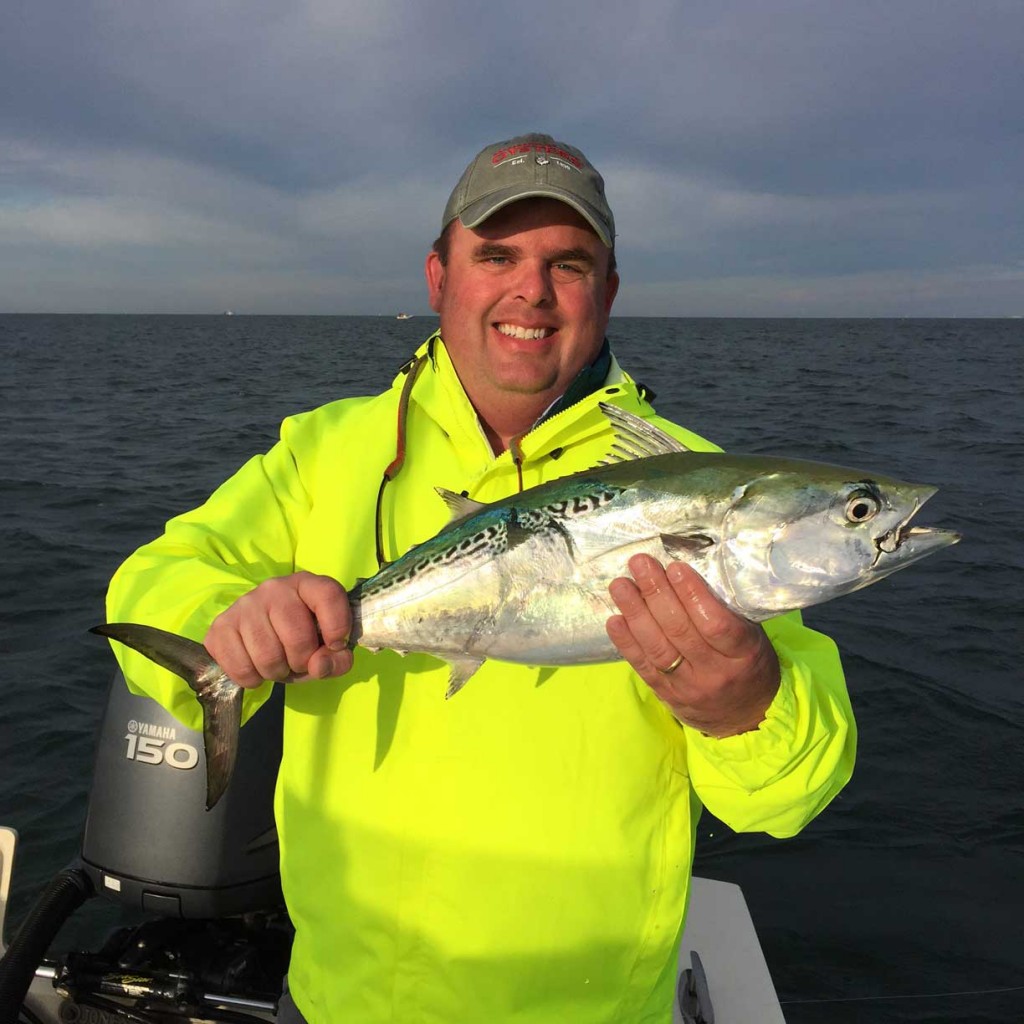5 Cold Weather Boating Tips: Dressing for the Shoulder Seasons
Just because it's cold outside doesn't mean you have to hang it up for the season.
November 19, 2014
If you’re anything like me, you have to be dragged kicking and screaming into winter every year. It’s currently 32 degrees outside and I’m wearing shorts and Birkenstocks. Call it denial.

It was about 45 degrees when this picture was taken, but I'm snug as a bug in a rug. Dress correctly for the weather and you can enjoy late-season boating, too.
While many of my boating brethren have already traded fishing for bagging leaves, I’m still scheming how to get a few more days on the water. And that means picking the right gear to do it. So here are some cold weather gear tips to help extend your boating season.
1. Layer, Layer, Layer
You’ve likely heard this from your local weather forecaster several hundred times over the past few years, but layering truly is one of the best ways to stay warm. That’s because each piece of clothing traps a layer of insulating air. And as the temperature or your activity level changes, you can shed a layer at a time until you're comfy again.
2. Put a Lid On It
There’s actually some scientific debate as to whether we lose the majority of our body heat through our heads, but one thing’s for certain: wearing a hat, especially one that covers your ears, goes a long way toward keeping you warm on the water.
You can certainly wear a traditional wool knit cap, but if you’re like me and don’t enjoy the feeling of having a wool dome over your head, consider a baseball hat combined with a fleece neck gaiter that you can pull up over your ears.
3. Check Your Footwear
Putting on a thick pair of wool socks sure sounds good when it’s freezing outside, but make sure you’re not compromising the circulation in your feet by compressing thick socks inside tight shoes or boots. I learned this one from a physician I used to sail with, after he got tired of listening to me complain about my cold feet.
After seeing that my feet were about to burst out of my boots, he recommended getting a pair about a size and half larger to encourage more circulation and trap more air in the layers of my socks. It totally worked.
4. Hand Jive
The unfortunate thing about gloves is that they tend to get in our way when boating. For anglers, it's almost impossible to tie on a lure or hook with big, bulky gloves, while sailors might have a difficult time tying knots or cleating a line with a pair of gloves on. Luckily there are all sorts of breathable lightweight gloves on the market today that make such tasks easier. Some even have coatings that allow you to use your touch-screen electronics or smartphone without having to take your gloves off. Me? I like fingerless gloves that keep most of my hands warm, but still keep the tactile parts of my fingers exposed.
5. Block the Wind
Once you’ve got everything covered and layered up, make sure you have a good windproof jacket and pants to help keep the air from penetrating your layering system. And yes, breathable is better. Otherwise you stand the chance of literally fogging up inside your jacket as you perspire. Breathable fabrics let that perspiration out, keeping you warm and dry.
While it may sound as if I’m telling you to bundle up like the Michelin Man, I’m not. In fact, the correct application of cold-weather gear results in you being able to sail, fish, paddle, row, or do whatever you like on the water, without being uncomfortable.
Now put that rake down, get out there, and enjoy.











